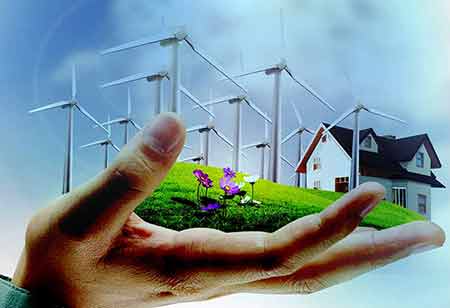Thank you for Subscribing to Energy Business Review Weekly Brief
Sorts of Digital Tools For Energy Efficiency Policy

By
Energy Business Review | Saturday, January 29, 2022
Stay ahead of the industry with exclusive feature stories on the top companies, expert insights and the latest news delivered straight to your inbox. Subscribe today.
As the market and technological landscape shift, policymakers are progressively using digital technologies for energy efficiency policies to create more secure, clean, and adaptable energy systems.
FREMONT, CA: Digitalization can affect energy efficiency strategies by giving greater information and a clearer perspective of distributed energy resources. This may unlock new policy design choices, enabling energy efficiency markets to operate on a larger scale. With resources such as smartphone apps and internet tools, digitalization can also improve the implementation and monitoring of program delivery.
Moreover, digital tools can be especially useful in fostering engagement tailored to community needs in delivering the most cost-effective energy savings and addressing energy vulnerability and various health, social, and gender equity concerns. A broad range of stakeholders could gain from the deployment of such tools.
Databases and big data
As the globe digitalizes by deploying smart gadgets, grids, and other IT infrastructure and systems, massive amounts of energy data are generated. Such information can be useful for policymakers attempting to meet their energy and climate policy objectives.
In addition, moving toward uniform criteria for assessing energy efficiency gains can also assist scale-up markets and finance system flexibility resources like virtual power plants and Pay-for-Performance (P4P) energy efficiency resource procurement.
GIS mapping and remote sensing
The construction industry has enormous room to raise energy efficiency. Thanks to digital technologies at a significantly cheaper cost, identifying energy efficiency potential in buildings is becoming increasingly possible. In addition, these digital technologies can be used more extensively for large-scale deployments of energy-efficient homes and other building structures.
Using the Hot Maps project in Europe, pilots are being run to identify high-priority regions for efficiency improvements to heating and cooling systems through geographic information system (GIS) mapping software. The open-source application permits municipal planners to visualize areas with potentially high heating or cooling loads, which can be prioritized for energy efficiency enhancements as part of air - conditioning systems action plans.
Digital certification and compliance
Regarding energy efficiency standards and labeling programs, digital technologies enable electronic labels, which eradicate the need to physically change labels on appliances and equipment when requirements are updated regularly.
Compared to traditional product labels, QR codes combined with smartphones and apps can give a more effective certification system. In addition, consumers may quickly examine and compare the energy efficiency of appliances using QR tags connected to devices and linked to a database.






